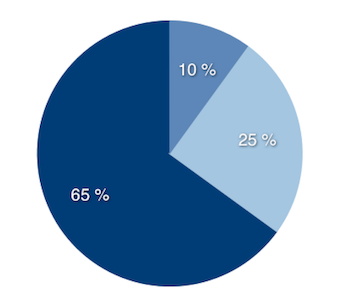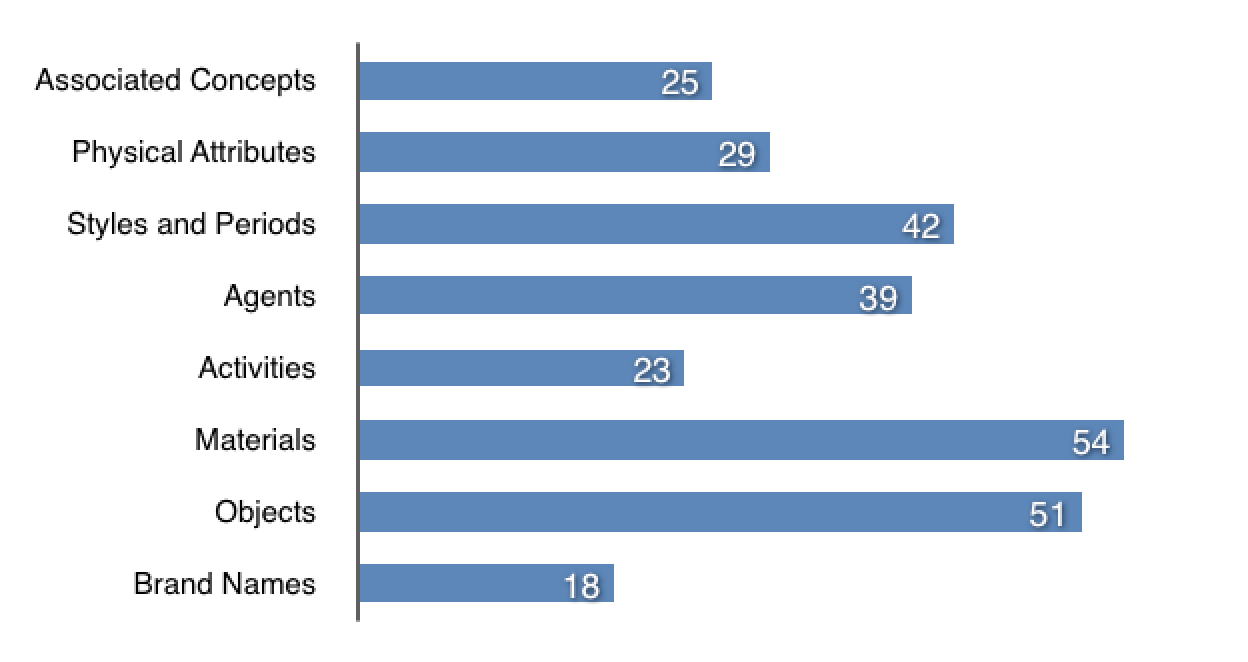Navigation auf uzh.ch
Navigation auf uzh.ch
In fall 2018, Swiss Art Research Infrastructure (SARI) conducted a wide-ranging survey on reference data in the field of art and architectural history and related disciplines. The survey was aimed at universities, research institutions, museums, collections, archives and comparable cultural institutions in Switzerland.
Approximately 250 people took part in the survey, mainly from universities, museums and research institutions, but also from the cultural heritage sector and other fields. Most of the feedback came from academic staff (49%) and senior managers (38%).

Diagram 1: Persons who responded to the survey work in these professional fields.

Diagram 2: The following functions and activities of the survey participants were represented.
It is gratifying to note that most survey participants work with reference data, especially for works (61%) and keywords (57%). More than half of the institutions represented also work with reference data for individuals and corporations (52%), while thesauri have so far been used rather little in the field of geography and iconography.
It is informative to know which sources of the reference data are in use. Around 75 percent of the respondents work with terminologies and authorities that have been developed within their own institutions and with their own resources. In the case of external reference data sources, on the other hand, clear favorites have emerged:
The following reference data is mainly used for (art) works:
- Wikipedia: 32%
- Gemeinsame Normdatei (GND): 26%
- Wikidata: 12%
- Library of Congress Authorities: 12%
For individuals and corporate bodies:
- SIKART Lexicon on Art in Switzerland: 65%
- Historical Dictionary of Switzerland: 47%
- Gemeinsame Normdatei (GND): 35%
For geographical names:
- Gemeinsame Normdatei (GND): 25%
- Geonames: 16%
- Getty Thesaurus of Geographic Names (TGN): 13%
For iconography:
- Iconclass: 40%
- Wikipedia 29%
- Getty Iconography Authority (IA): 12%
For keywords:
- Art and Architecture Thesaurus (AAT): 15%
- Gemeinsame Normdatei (GND): 14%
- Wikipedia: 14%
- other, printed sources: 14%
We received differentiated answers about why reference data is not being used – mainly because of the lack of human resources. Secondly, there is a lack of suitable reference data with regard to content. It was stated that reference data often is incomplete, not updated, and respondents claimed an overview of possible reference data as well as their possibilities for its use and linking.
It is striking that the AAT is largely unknown in Switzerland. 65% of the interviewees did not know it, while 10% know and use the AAT. Every fourth respondent knew the AAT but does not use it.

Diagram 3: Most of the respondents did not know the AAT. 25 percent knew the thesaurus but do not use it and 10 percent of respondents use it at work.
75 percent of the respondents would use the AAT if the terms were available in their own language. The prerequisites and claims are the following:

Diagram 4: These facets of the thesaurus are the most important for the respondents (as percentage).

Diagram 5: These characteristics of the Art and Architecture Thesaurus were considered the most important.
The survey identifies clear needs for the use of reference data:
Multilingualism
Reference data must be multilingual and available in all national languages so that they can be used meaningfully for existing and future research and collection data. This applies in particular to thesauri in the field special terms/keywords/concepts, such as the AAT.
Scientific character and expandability
The central criterion for the use of reference data is its scientific nature, as well as its expandability. Reference data must be scientifically proven and verifiable. They must also be expandable with regard to specific research questions and collection contexts.
Accessibility and interlinking possibilities
No less important is that the reference data is accessible and that it allows interlinking with other reference data. For example, more concordances between different reference data are needed, as well as the ability to create a network with the reference data in use.
The survey revealed clear shortcomings and needs. SARI will therefore be active in the following areas:
A translation project planned by SARI aims to translate selected terms from the Art and Architecture Thesaurus (AAT) into German, French and Italian. Thus the AAT – a thesaurus widely used in the global community of cataloguing objects in contemporary and cultural-historical collections – will also be of use here in Switzerland.
The reference data service being developed by SARI is intended to enable institutions to integrate their own terminology into existing, multilingual thesauri and make them publicly accessible to other actors – free of charge. Thus, specialized, local thesauri of individual institutions can be opened up for a larger research community and reusable by other institutions.
SARI presents the Art and Architecture Thesaurus and its use and discusses possible cooperation and translation projects at an information event on Friday, 25 January 2019, 10:15 am-12:30.
Please register by clicking on the following link:
http://bit.ly/sari-reference-data-event
For further information, questions and any cooperation interests, please send us a message: vocab@swissartresearch.net